Capacitors play a key role in almost all electrical and electronic equipment and electrotechnical installations. These versatile components store electric charges and smooth or buffer currents and voltages. They are used to filter and suppress HF interference as well as to decouple signals in telecommunications applications. Capacitors can in principle be subdivided into two groups depending on their construction: those in dry technology and those based on wet technologies with electrolytes. The former include film and ceramic capacitors, while the latter comprise aluminum electrolytic and tantalum capacitors.
Depending on the technology and applications, capacitors are manufactured for voltages from a few to over 10 000 volts. Their capacitance values extend from picofarads to the lower farad range.
Aluminium
Aluminium Electrolytic Capacitors
Aluminium electrolytic capacitors offer very high capacitance values per unit volume over a wide range of rated voltages. They are based on aluminium films whose surface has been enlarged by an etching process. This produces an active surface area that is a multiple of the original film area, allowing capacitances of several 100,000 µF to be reached. Thanks to their low equivalent series resistance (ESR) and series inductance (ESL), these capacitors are distinguished by high ripple current capabilities even at high clock frequencies.
In addition to the very large matrix of voltage and capacitance values, aluminium electrolytic capacitors offer several terminal configurations. These include screw terminals, snap-in and solder-star versions as well as axial and radial designs.
With their high capacitances, these capacitors are used mainly to smooth ripple voltages and to stabilize the voltage in all electrical engineering and electronics application area.
Applications:
- Frequency converters
- Converters in wind power plants
- Solar Inverters
- Uninterruptible power supplies
- Power supplies
- Medical engineering equipment
- Lamp ballasts
- Automotive electronics systems
- Consumer electronics and telecommunications equipment and systems
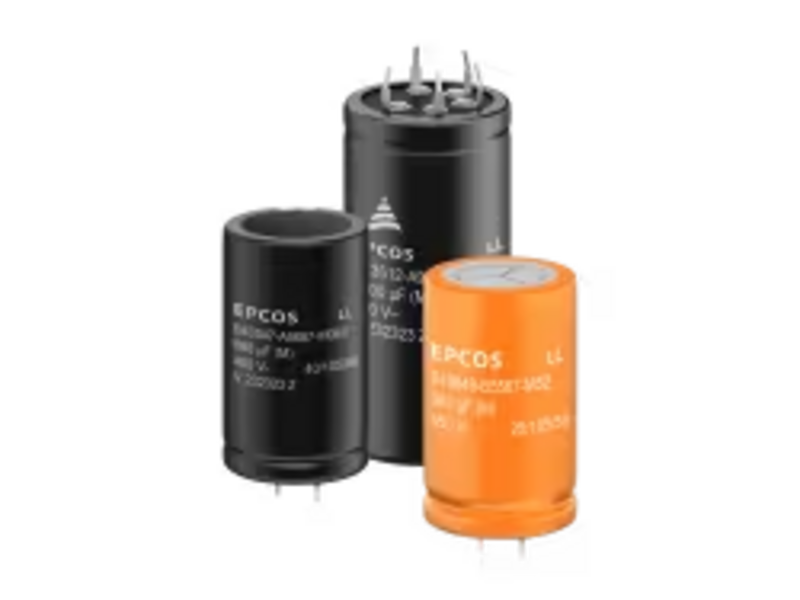
Aluminium electrolytic capacitors in screw-terminal or snap-in versions are used mainly in converters for industrial electronics. They are characterised by their long operating life and high ripple current capability.
THT Alu
GX Snap In Alu
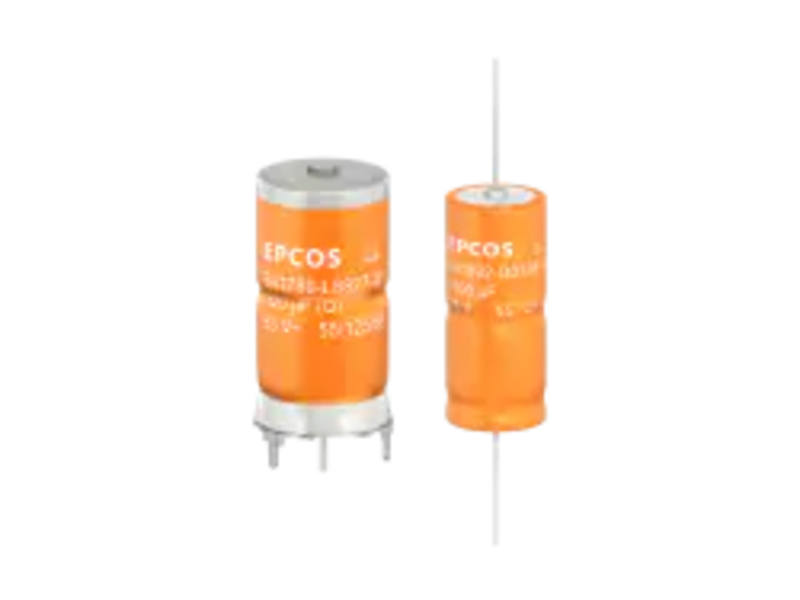
Aluminium electrolytic capacitors for automotive electronics. These types offer a vibrational strength of up to 40 g and can be used in a wide temperature range from -55 to 150°C
CD surface-mounted device (SMD) Alu
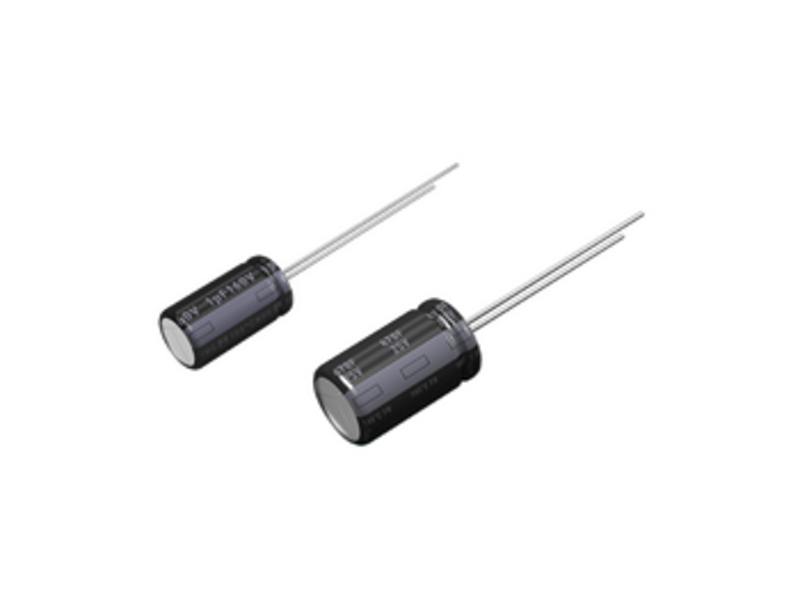
Radial leaded electrolytic capacitor
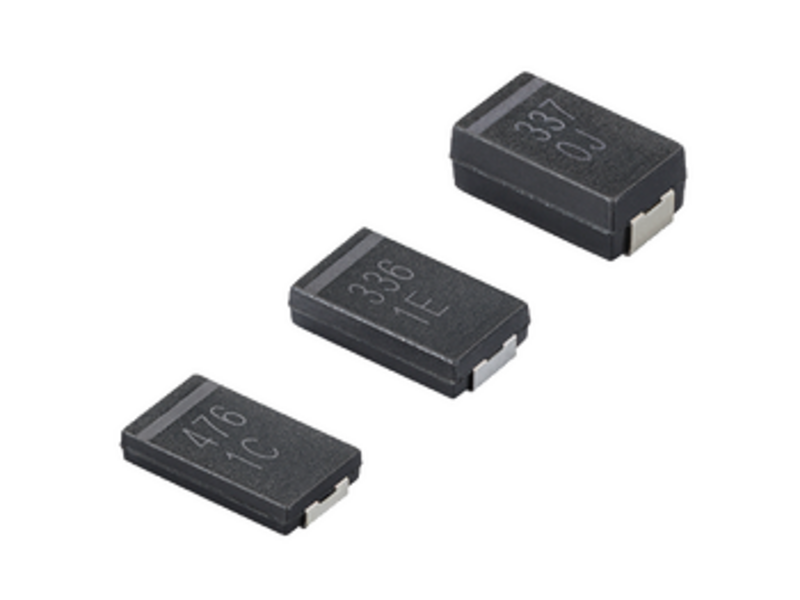
High capacitance conductive polymer capacitors
Double Layer Alu
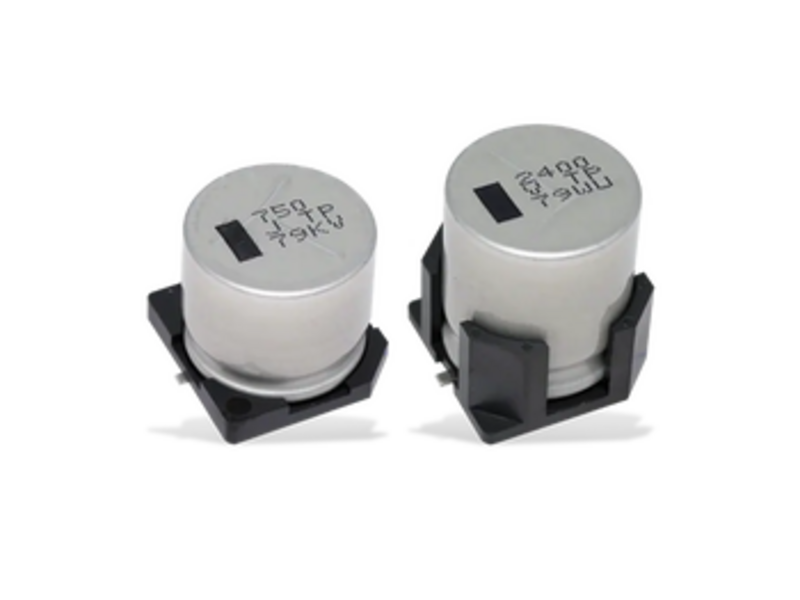
Electrolytic SMD anti-vibration capacitor
Polymer LF
FP Polymer
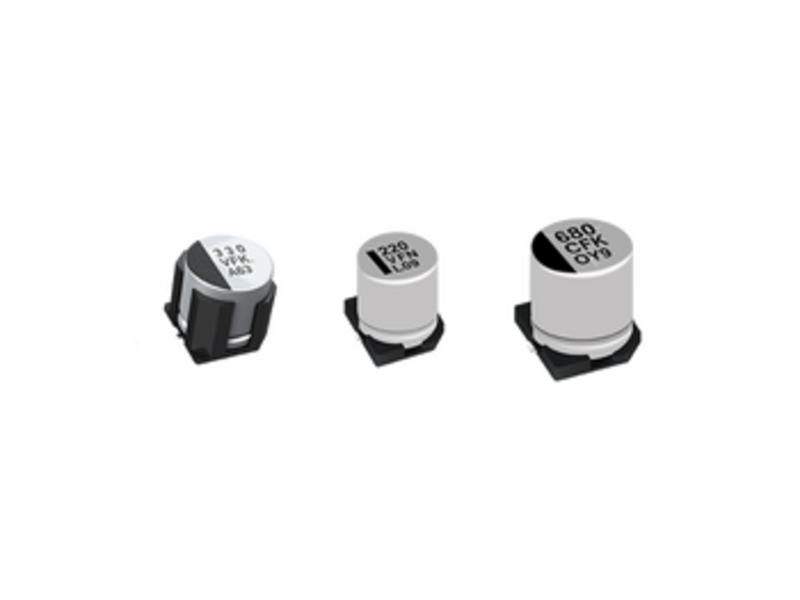
Electrolytic SMD capacitor
Ceramics
Ceramic capacitors are available for well-defined frequency ranges with a defined temperature coefficient (Class 1 capacitors) or for smoothing and suppressing of noise frequencies (class-2 capacitors), e.g. used in power supplies.
Multilayer ceramic chip capacitors (MLCC) are the most widely used capacitors in electronics. In addition, ceramic capacitors are available in different special shapes and constructions as to be named as Embedded-, Bonding-, Feed-Thru-, Anti-Noise-, Low-Acoustic Noise-, Power-, High Frequency-, Hi-Q, Low-ESR-, Low-ESL, Safety- or High Frequency Capacitors.
Main applications:
- Equipment and systems of information and communications electronics
- Consumer electronics equipment
- Automotive electronics systems
- Noise suppression and stabilisation circuits
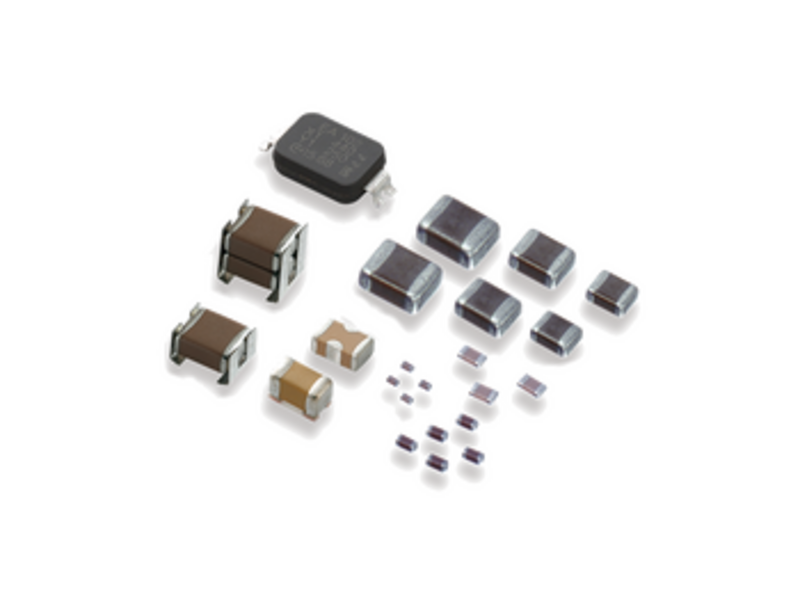
Ceramic capacitors (SMD type)

Ceramic capacitors (lead type)
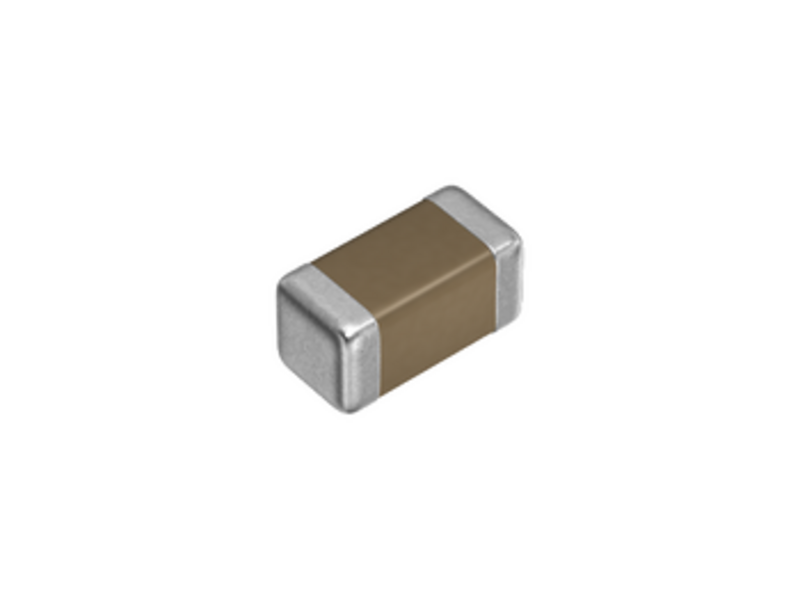
MET Films
Film Capacitors are used in almost all electronic circuits. They store energy and discharge it when needed. Important applications for film capacitors include electronic filtering for linear and switching power supplies; decoupling and bypass of electronic signals for circuits and circuit boards; and frequency control, timing and conditioning of electronic signals for a broad range of applications.
Film capacitors are constructed of electrodes (the capacitor plates) with plastic dielectric material in between. The type of electrode used determines whether the capacitor is a metalized film or a film/foil type.
Metalized capacitors have a self-healing behavior as an key characteristic by its construction. Self healing is the ability to recover after a dielectric breakdown. Due to their construction, very thick electrodes, film/foil capacitors can carry higher currents than metalised types, but are much larger in volume. These capacitors cannot recover after a breakdown.Therefore in some constructions double side metalised plastic film is used as electrode to replace the foil. The plastic material has only the function of carrier: the self healing properties are maintained and the current carrying capability is increased a lot in comparison with single metalized types. Depending on the AC voltage in the application, single or series constructions are used. In a series construction two or more sections are placed internally in series in one capacitor. Single section capacitors are normally used for products with an AC rating up to 300 Vac. Series constructions are used for higher voltages. The end connection of the capacitor cell to the outside circuit is realized by metal sprayed end connections wherein lead wires or tabs are welded.
Finally the capacitor cells can be protected for severe environmental conditions or to withstand passive flammability. Encapsulation with epoxy materials in plastic boxes is common used for fixed outline dimensions. Epoxy dipped capacitors have a more rounded and easy to handle shape. All these encapsulations are flame retardant materials fulfilling the UL 94 classification system.
Axial types are typically of the wrapped end construction. An extra wrapped film and epoxy at the end connections protects the cell. For high power film capacitors as well aluminum housings in a can-format are common.
Main applications:
- Power supplies
- Systems and installations for power factor correction
- High voltage DC (HVDC) transmission systems
- Inverters for solar energy installations
- Inverters for traction applications
- Equipment and systems of consumer electronics and communications technology
- Ballasts for LED lighting systems
- Ballasts for xenon lamps in motor vehicles
- EMC filters
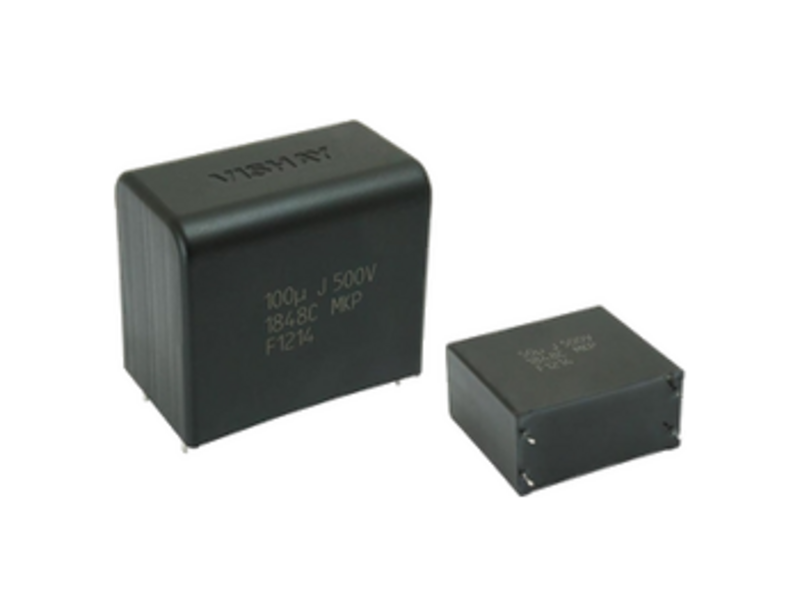
Film Capacitors (DC-Link)
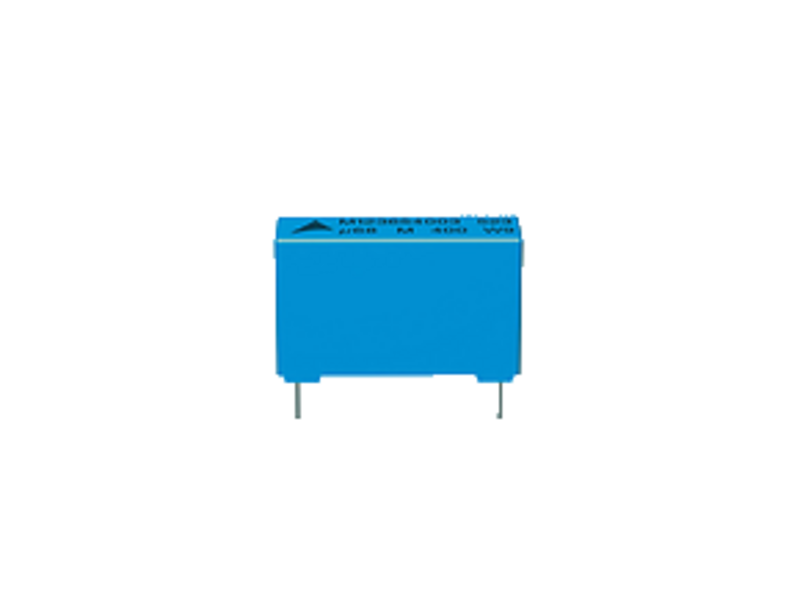
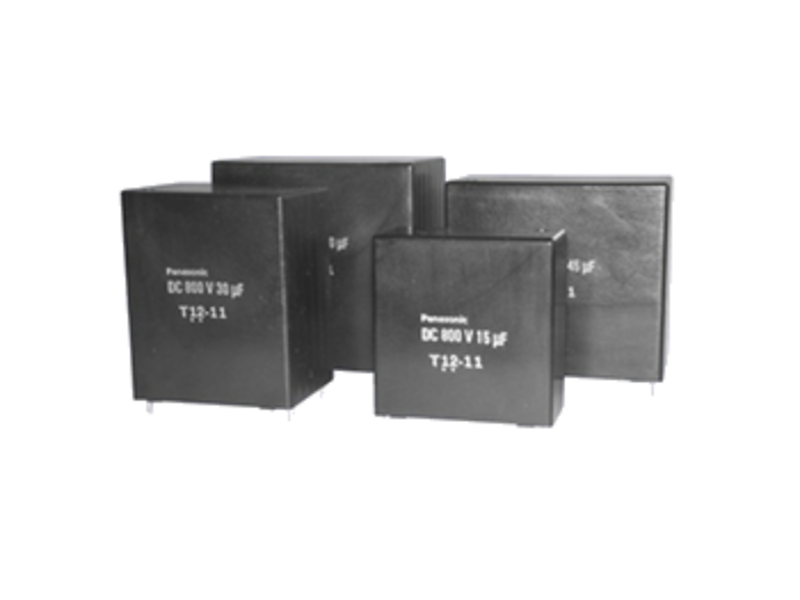
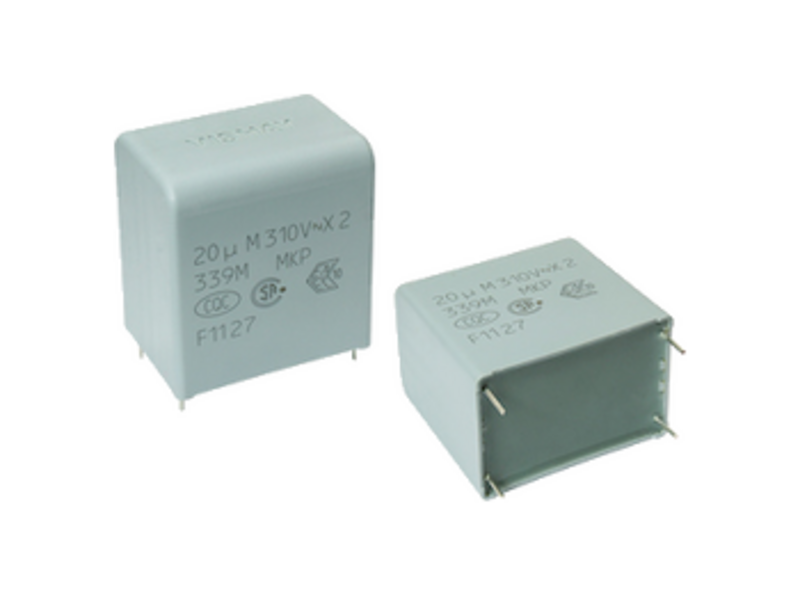
Film Capacitors (EMI Suppression)
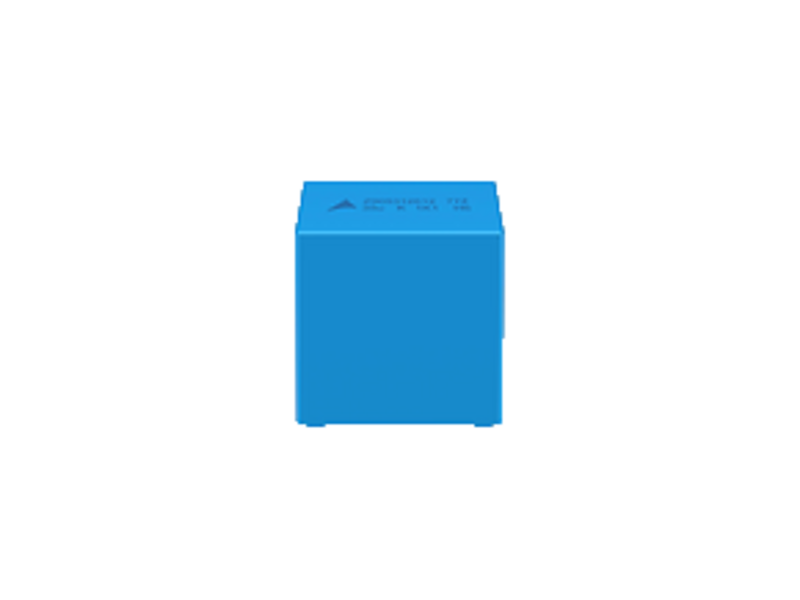
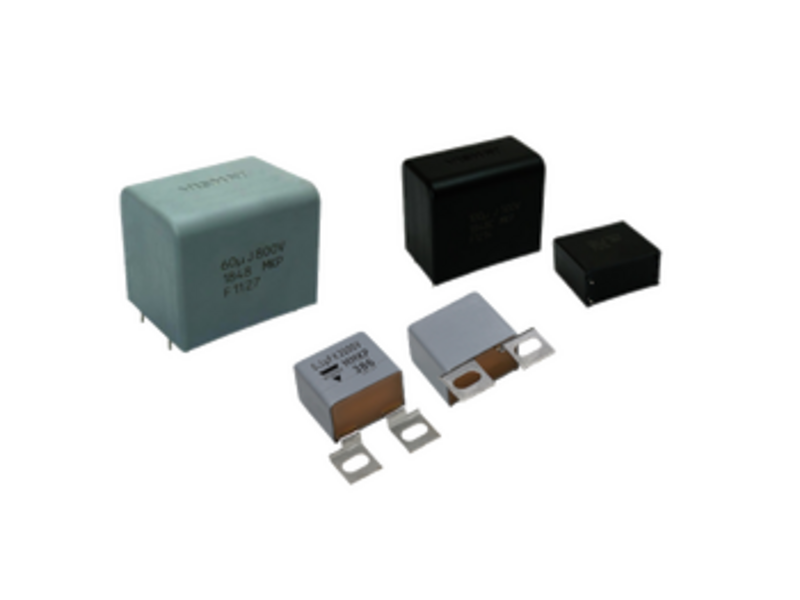
Film Capacitors (various kinds)
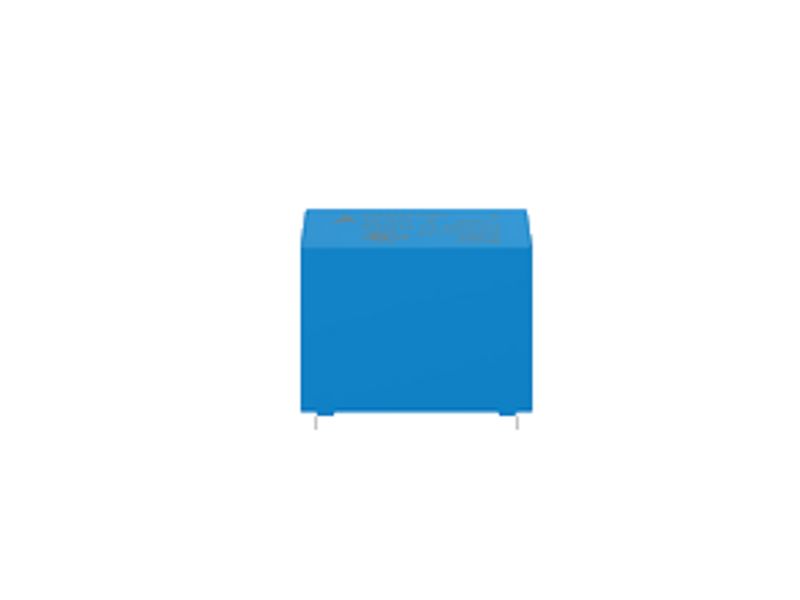
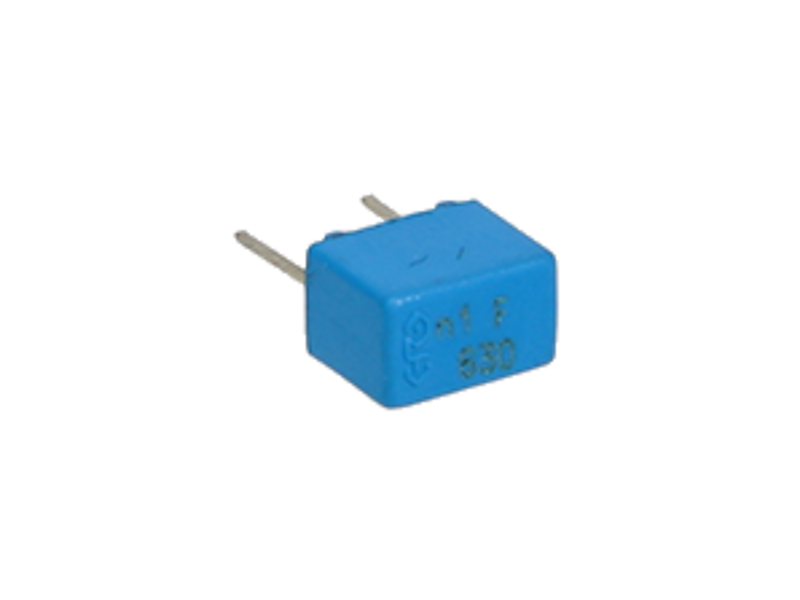
Film Capaciror (epoxy lacquered)
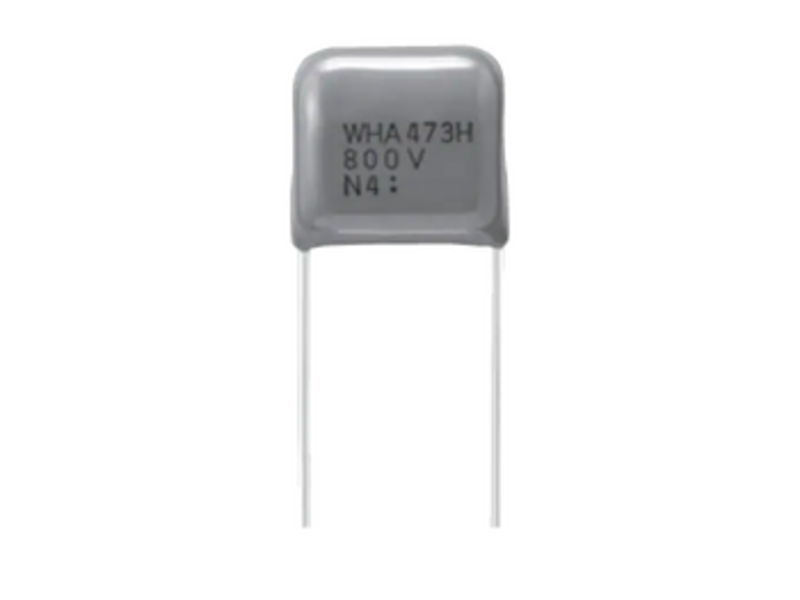
Tantalum
Tantalum Capacitors are used in various electronic applications for buffering and filtering which are having a focus on high reliability, long life time, high environmental temperatures or smaller size, as automotive electronic or power supplies, mobile phones, 3g/4G modems, laptop PCs or medical equipment, to name just a few. Tantalum capacitors are electrolytic capacitors based on pressed Tantalum metal powder then sintered and attached to a tantalum wire to form the anode. The dielectric is set by an electrochemical acid process which oxidizes on the surface. The cathode of Manganese dioxide (MnO2) is created during a high temperature process and is connected to by a graphitic carbon and a silver layer to the cathode termination. Tantalum capacitors have the highest capacitance to volume ration of all capacitors due to their specific monolithic construction and as well as mechanically very robust component structure. They are available in various packages as chip, molded SMD or leaded dipped or leaded axial.
Polymer Tantalum capacitors are using conductive polymers as cathode materials; else the construction is comparable to the MnO2 equivalent. Their specific construction show ESR values in the range as known from multi layer chip capacitors (MLCC).
Wet Tantalum have a special constructions based either on Tantalum foils and a liquate electrolyte or on a Tantalum pellet with a liquid electrolyte, both with a cathode-case made out of Tantalum in a hermetic sealed construction. These products are used for applications with highest requirements on reliability, quality and robustness and temperature performance in military and industrial areas. Due to their construction operation voltage even significantly beyond 150V can be realized.
Main applications:
- Automotive electronics systems
- Equipment and systems of information and communications electronics
- Consumer electronics equipment
- Voltage stabilisation circuits
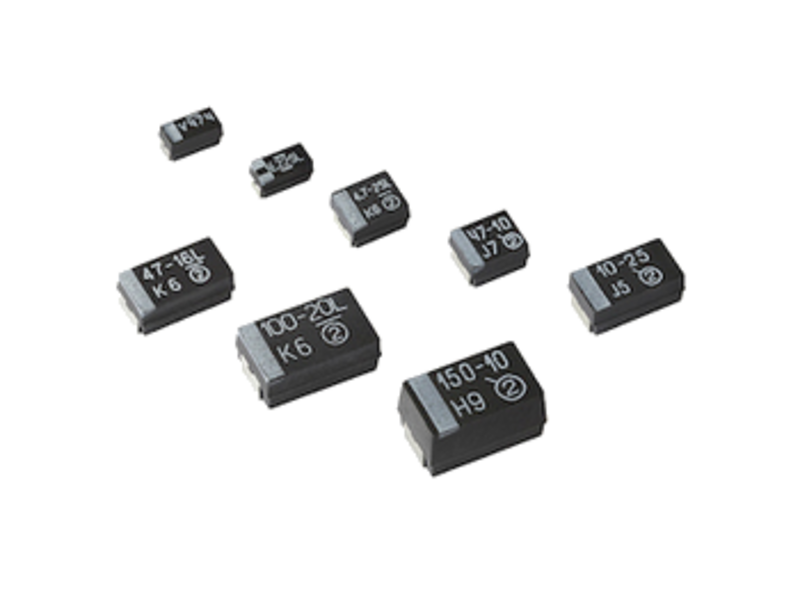
SMD Molded Tantalum
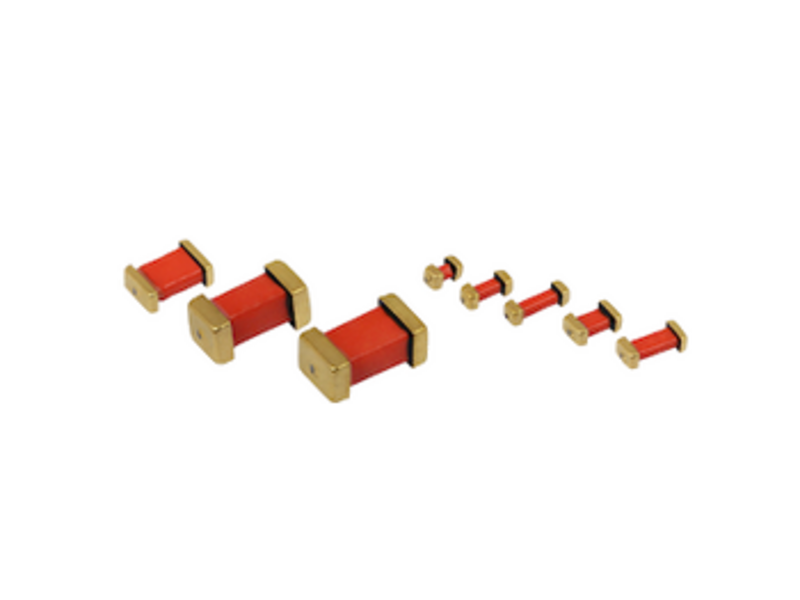
SMD Conformal Coated Tantalum
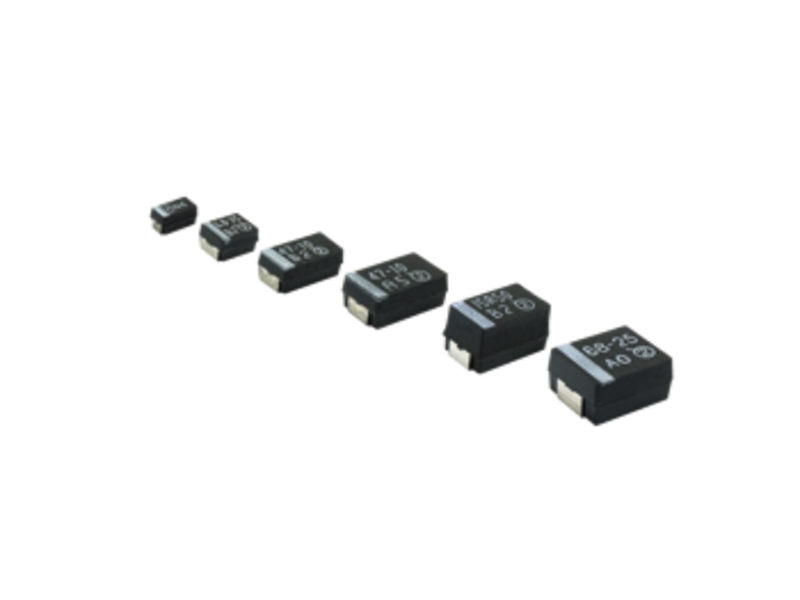
SMD Molded Tantalum
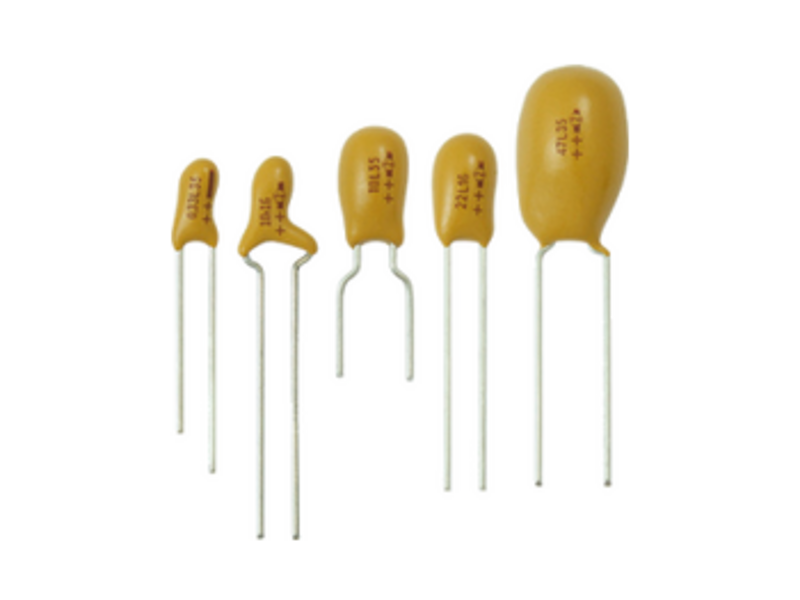
Leaded dipped Tantalum
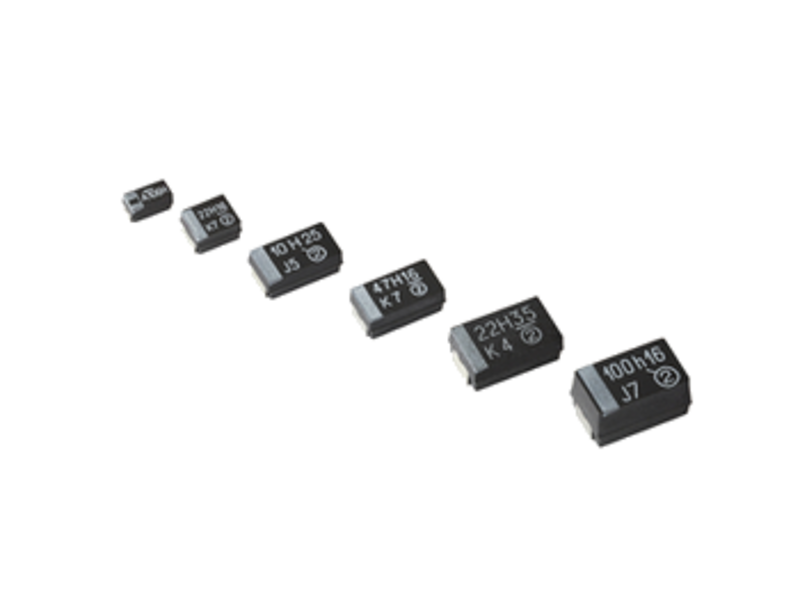
SMD Molded Tantalum
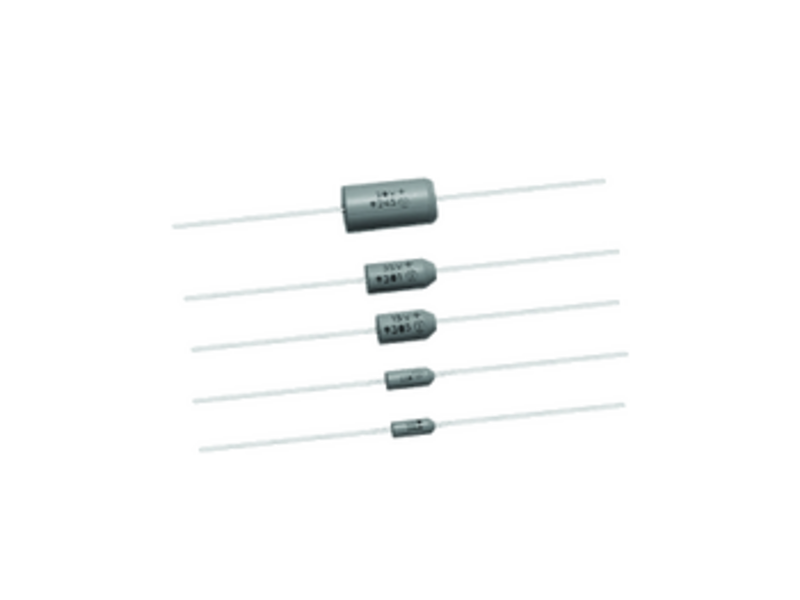
Leaded axial Tantalum
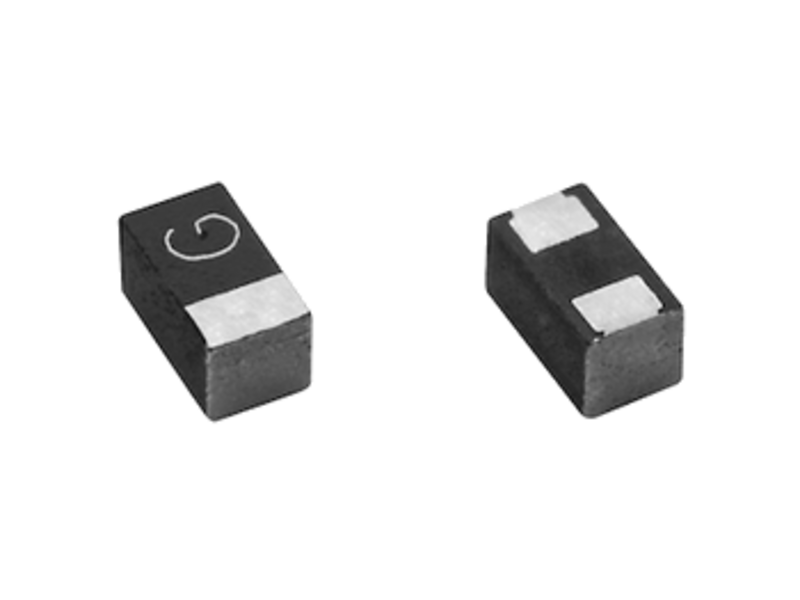
SMD MAP Tantalum Chips
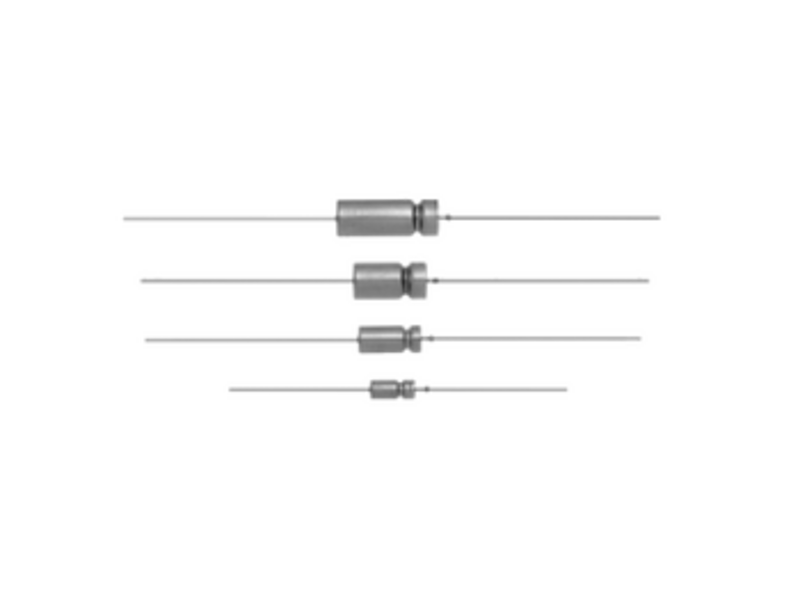
Wet Tantalum (leaded)
